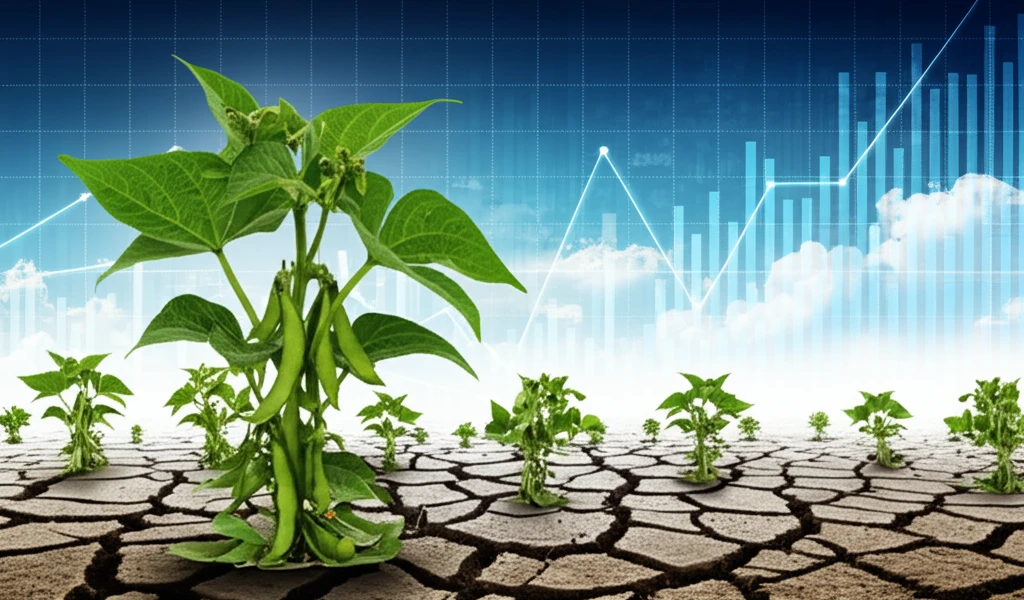
Bean There, Done That: Unlocking Legume Productivity in Arid Climates
"Can drought-resistant beans transform food security in dry regions? New research explores the secrets to successful legume cultivation in arid lands."
Beans, a cornerstone of diets worldwide, are more than just a tasty and versatile food source; they're a critical component of global food security. As one of the leading leguminous crops, beans are cultivated across the globe, playing a vital role in agriculture and nutrition. These plants don't just provide sustenance; they also contribute to soil health by fixing atmospheric nitrogen, making them an invaluable asset in sustainable farming practices.
However, the productivity of bean crops is increasingly threatened by the growing challenges of arid climates. As regions around the world face more frequent and severe droughts, ensuring stable and abundant bean yields becomes paramount. This challenge has driven scientists to explore the genetic diversity and adaptive potential of common beans, seeking to identify traits that can enhance their resilience to dry conditions.
In a recent study focusing on the Dagestan region, researchers delved into the variability of seed productivity traits in common beans, aiming to understand how these legumes can thrive in arid environments. By analyzing various accessions and assessing their performance across different altitudes, the study sheds light on the key factors influencing bean productivity and offers valuable insights for cultivating drought-resistant varieties. This research not only addresses the immediate concerns of food production in dry regions but also contributes to the broader understanding of plant adaptation and sustainable agriculture.
Decoding the Secrets of Bean Productivity: What Makes a Drought-Resistant Bean?

The study, conducted in the diverse climatic zones of Dagestan, Russia, involved a comprehensive analysis of 25 common bean accessions. These accessions, sourced from both domestic breeding programs and foreign collections, were evaluated for various traits related to seed productivity. The research was carried out across three key sites, representing different altitudes and environmental conditions, from lowland plains to mountainous terrains.
- Dry mass of generative shoot: The total weight of the plant's reproductive parts.
- Stem dry mass: The weight of the stem, indicating overall plant vigor.
- Fruit dry mass: The weight of the pods, reflecting the plant's ability to produce.
- Seed dry mass: The weight of the seeds, directly related to the yield.
- Average number of seeds per pod: An indicator of the plant's reproductive efficiency.
- Reproductive effort: The proportion of resources allocated to reproduction, a measure of the plant's adaptive strategy.
The Future of Beans: Cultivating Resilience in a Changing Climate
The insights gained from this study have significant implications for the future of bean cultivation in arid regions. By identifying key traits associated with drought resistance and high productivity, breeders can develop new varieties that are better adapted to challenging environmental conditions. Furthermore, the research highlights the importance of considering both genetic and environmental factors when selecting and managing bean crops. As climate change continues to impact agricultural systems around the world, understanding the adaptive potential of crops like common beans will be crucial for ensuring food security and promoting sustainable farming practices.
